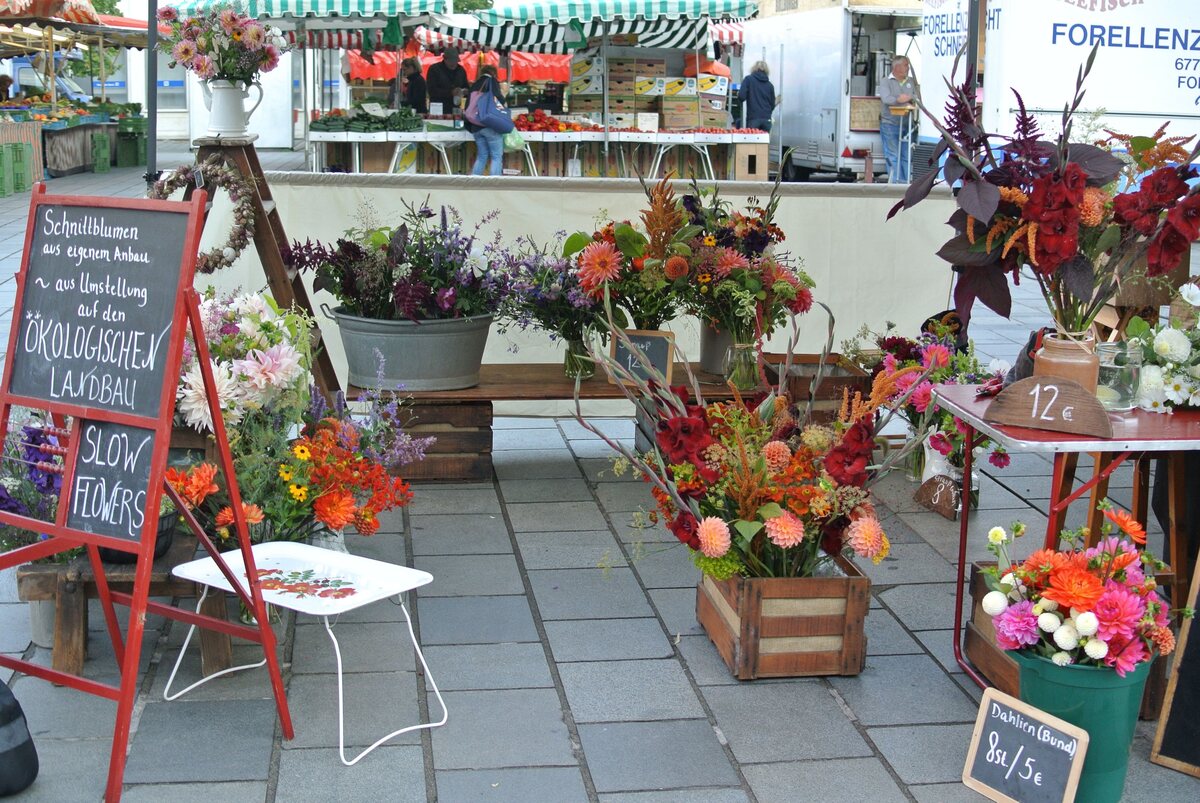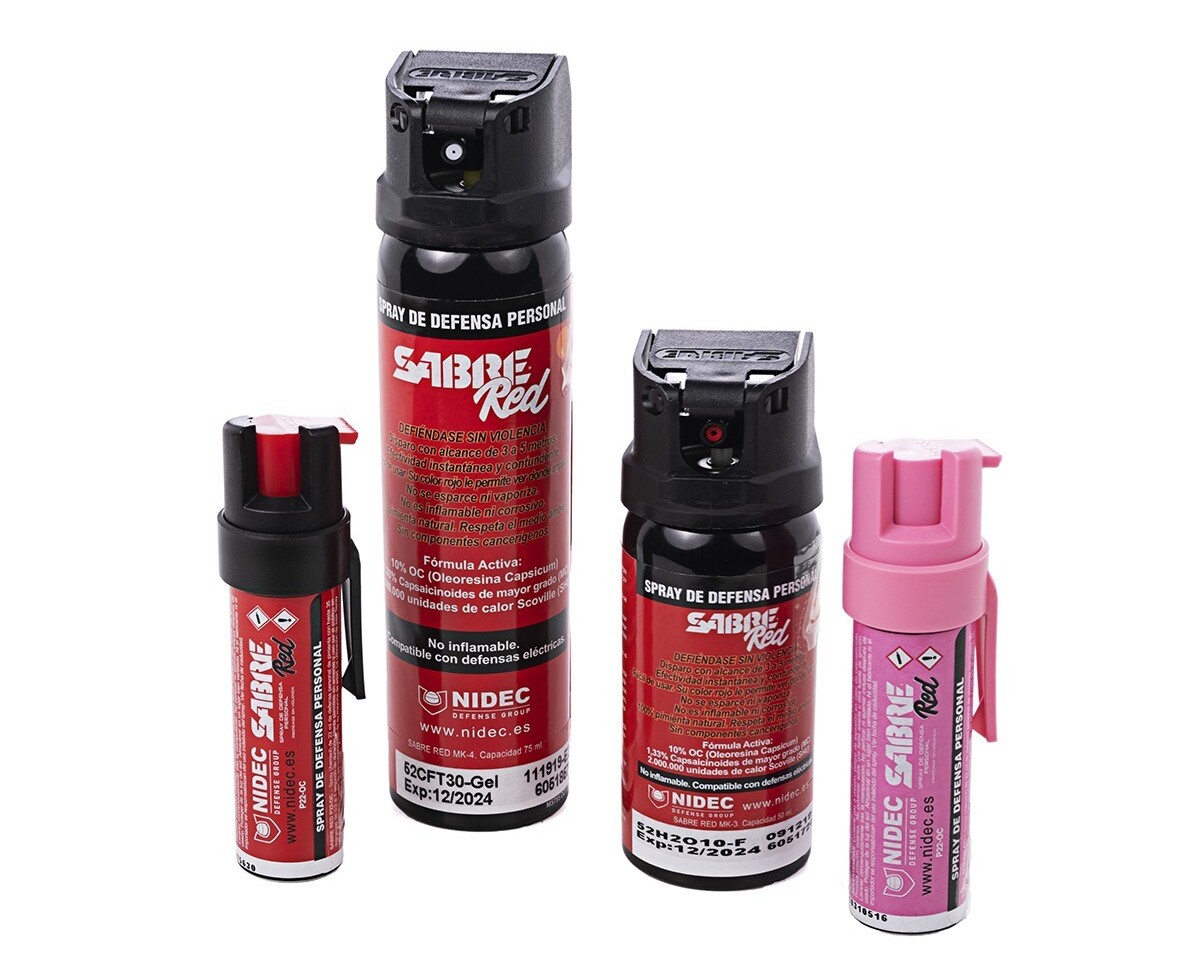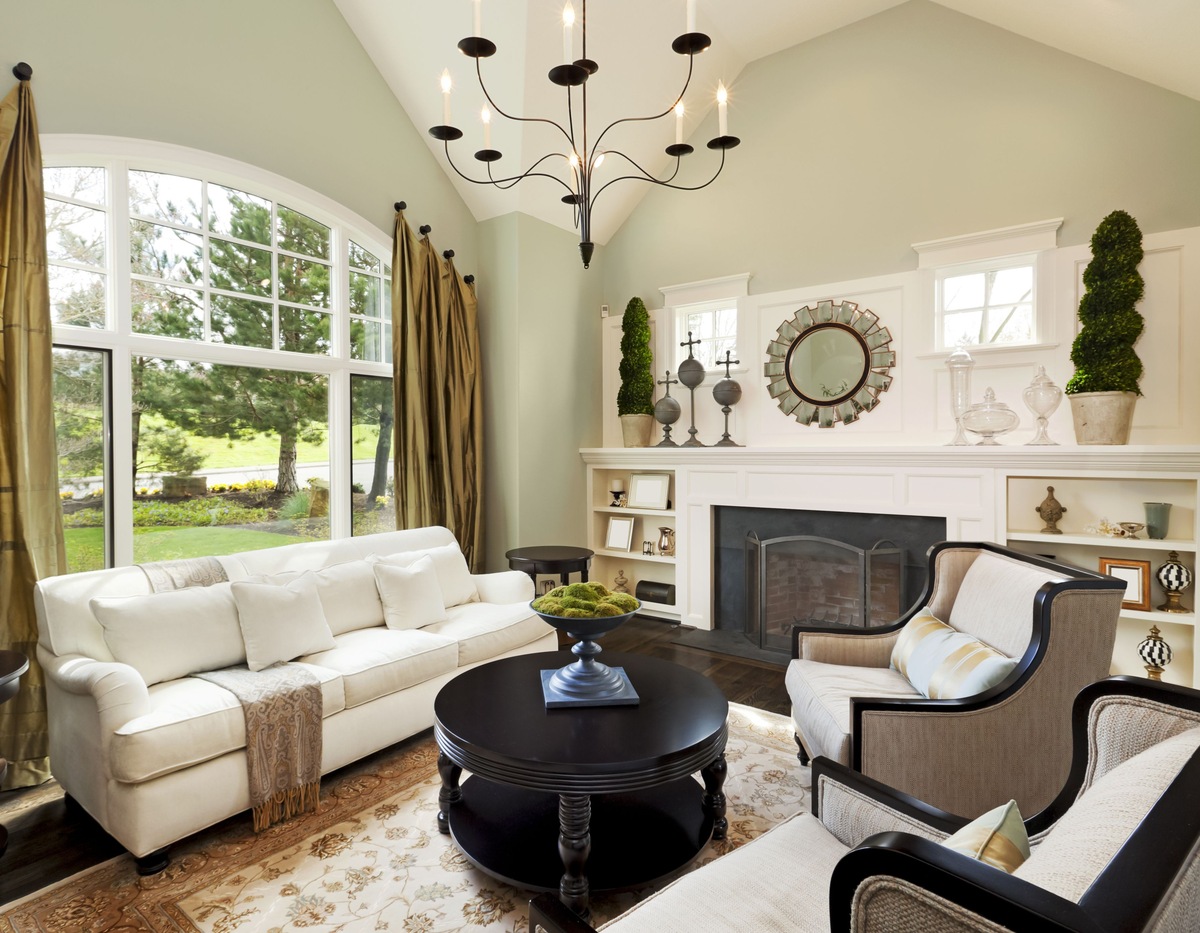Home>Furniture & Design>Interior Design Trends>How To Market Home Decor Products


Interior Design Trends
How To Market Home Decor Products
Modified: August 28, 2024
Discover the latest interior design trends and learn how to effectively market home decor products to captivate your audience and boost sales. Explore innovative strategies and tips for success.
(Many of the links in this article redirect to a specific reviewed product. Your purchase of these products through affiliate links helps to generate commission for Storables.com, at no extra cost. Learn more)
Introduction
The home decor market is a dynamic and ever-evolving industry that continuously adapts to the latest trends, consumer preferences, and technological advancements. As an interior design enthusiast or a business owner looking to market home decor products, understanding the intricacies of this market is crucial for success. In this comprehensive guide, we will delve into the strategies and techniques to effectively market home decor products, catering to the desires and needs of modern consumers.
In today's digital age, consumers are not just seeking functional and aesthetically pleasing home decor products; they are also looking for a story, a connection, and a reflection of their personal style. This shift in consumer behavior presents both challenges and opportunities for businesses in the home decor industry. By embracing innovative marketing approaches and leveraging the power of digital platforms, businesses can establish a strong presence, connect with their target audience, and ultimately drive sales.
Throughout this guide, we will explore the intricacies of the home decor market, identify the key components of a successful marketing strategy, and delve into the various channels and tactics that can elevate your brand and products in the eyes of consumers. Whether you are a seasoned home decor retailer or an emerging entrepreneur with a passion for interior design, this guide will equip you with the knowledge and insights needed to navigate the competitive landscape of the home decor market and effectively showcase your products to a diverse and discerning audience.
Join us on this journey as we unravel the art of marketing home decor products, from understanding consumer behavior to harnessing the power of social media, influencer collaborations, and customer testimonials. By the end of this guide, you will be empowered to craft a compelling marketing plan that resonates with your target audience and propels your home decor business to new heights of success. Let's embark on this creative and strategic exploration of marketing home decor products in the digital era.
Key Takeaways:
- Understanding consumer preferences and leveraging social media are crucial for marketing home decor products effectively in the digital age. Tailoring marketing strategies to resonate with diverse lifestyles is essential for success.
- Collaborating with influencers, showcasing at trade shows, and leveraging customer reviews are powerful tactics to amplify brand visibility and foster lasting connections with design enthusiasts in the competitive home decor market.
Understanding the Home Decor Market
The home decor market encompasses a wide array of products and styles, ranging from furniture and lighting to textiles and decorative accents. Within this diverse landscape, trends and consumer preferences play a pivotal role in shaping the market dynamics. Understanding the nuances of the home decor market involves staying attuned to the ever-changing tastes, lifestyle influences, and design movements that resonate with consumers.
One of the defining aspects of the home decor market is its close connection to fashion and interior design trends. Just as fashion experiences seasonal shifts and runway innovations, home decor undergoes its own evolution, driven by color palettes, patterns, and design motifs. Keeping a pulse on emerging trends, such as sustainable and eco-friendly designs, minimalist aesthetics, or vintage revivals, can provide valuable insights for businesses seeking to position their products effectively.
Moreover, the home decor market is deeply intertwined with the concept of lifestyle. Consumers often seek decor elements that align with their personal values, aspirations, and living environments. Whether it’s the allure of Scandinavian minimalism, the warmth of bohemian chic, or the sophistication of modern luxury, each style reflects a distinct lifestyle narrative that resonates with specific segments of the market.
As the digital landscape continues to influence consumer behavior, the home decor market has witnessed a proliferation of online platforms, interior design blogs, and social media channels dedicated to home styling and decor inspiration. This digital ecosystem has not only expanded the reach of home decor products but has also empowered consumers to explore diverse styles, seek expert advice, and engage with brands on a more personal level.
Understanding the home decor market goes beyond recognizing design trends; it involves comprehending the emotional and aspirational aspects that drive consumer purchasing decisions. By recognizing the emotional connections that consumers seek through their home decor choices, businesses can tailor their marketing strategies to evoke the desired sentiments and resonate with their target audience on a deeper level.
As we navigate through the intricacies of the home decor market, it becomes evident that consumer preferences, lifestyle influences, and digital engagement are pivotal factors that shape the industry’s landscape. By embracing these insights, businesses can position their home decor products effectively and establish a compelling brand presence that captivates the hearts and homes of consumers.
Identifying Your Target Audience
One of the fundamental pillars of a successful home decor marketing strategy is the precise identification of the target audience. In the diverse and dynamic landscape of home decor, understanding the demographics, psychographics, and purchasing behaviors of your potential customers is essential for crafting tailored marketing initiatives that resonate with their preferences and aspirations.
Demographic segmentation forms the basis of understanding the quantitative attributes of your target audience, including age, gender, income level, education, and household composition. These demographic factors provide valuable insights into the specific consumer groups that are likely to be interested in your home decor products. For instance, millennials may gravitate towards modern, multifunctional furniture solutions, while affluent households may seek luxury and bespoke decor pieces.
Psychographic segmentation delves into the qualitative aspects of consumer behavior, encompassing lifestyle choices, values, interests, and personality traits. By understanding the psychographic profiles of your target audience, such as their affinity for sustainable living, love for travel-inspired decor, or preference for artisanal craftsmanship, businesses can tailor their marketing messages and product offerings to align with these nuanced preferences.
Furthermore, delving into the purchasing behaviors and decision-making processes of your target audience is crucial for refining your marketing approach. Understanding whether your audience values convenience, seeks expert recommendations, or prioritizes affordability can inform the development of compelling marketing strategies that address their specific needs and motivations.
In the digital age, leveraging data analytics and consumer insights from online platforms and social media can provide invaluable guidance in identifying and understanding your target audience. Social media listening tools, website analytics, and customer engagement metrics offer a wealth of information regarding consumer preferences, content engagement, and product affinities, enabling businesses to refine their target audience profiles and customize their marketing efforts accordingly.
By honing in on the distinct characteristics, preferences, and behaviors of your target audience, businesses can create tailored marketing personas that embody the essence of their ideal customers. These personas serve as guiding archetypes, allowing businesses to humanize their target audience and develop marketing strategies that speak directly to the aspirations, desires, and lifestyles of their potential customers.
Ultimately, the process of identifying your target audience is a foundational step that underpins the entire home decor marketing strategy. By gaining a deep understanding of the demographics, psychographics, and purchasing behaviors of your audience, businesses can craft compelling narratives, curate relevant product assortments, and deploy targeted marketing campaigns that resonate with the hearts and homes of their ideal customers.
Creating a Unique Selling Proposition
In a competitive market brimming with an array of home decor products, establishing a unique selling proposition (USP) is pivotal for differentiating your brand and captivating the attention of consumers. A compelling USP encapsulates the distinctive qualities, value proposition, and emotional resonance of your home decor products, setting them apart from the offerings of competitors and resonating with the desires and aspirations of your target audience.
At the core of crafting a compelling USP lies the identification of what sets your home decor products apart from others in the market. This could encompass a variety of factors, such as innovative design features, sustainable and eco-friendly materials, artisanal craftsmanship, customizable options, or a unique fusion of cultural influences. By pinpointing the specific attributes that make your products exceptional, businesses can articulate a USP that resonates with the discerning preferences of consumers.
Moreover, a robust USP goes beyond highlighting product features; it encapsulates the emotional and aspirational elements that resonate with consumers on a deeper level. Whether it’s the promise of transforming living spaces into havens of tranquility, the celebration of individuality through bespoke decor pieces, or the commitment to ethical sourcing and production, the emotional resonance embedded within the USP creates a compelling narrative that forges a meaningful connection with consumers.
When crafting a USP for home decor products, it is essential to align it with the values and aspirations of the target audience. Understanding the lifestyle preferences, design sensibilities, and emotional triggers of consumers enables businesses to tailor their USP to evoke the desired sentiments and resonate with the inherent desires of their potential customers.
Furthermore, a well-defined USP serves as a guiding beacon for all marketing initiatives, shaping the brand’s messaging, visual identity, and customer interactions. Whether communicated through compelling storytelling, visually captivating content, or experiential brand activations, the USP forms the foundation upon which the brand’s identity and consumer perception are built.
In the digital realm, a compelling USP becomes a pivotal tool for capturing the attention of consumers amidst the vast array of online offerings. From engaging website content and social media campaigns to visually immersive digital experiences, the USP acts as a magnetic force that draws consumers towards the brand, igniting their curiosity and fostering a sense of connection and resonance.
Ultimately, a well-crafted USP serves as a beacon of differentiation and resonance in the crowded landscape of home decor products, elevating the brand’s identity and products in the eyes of consumers. By infusing the USP with a blend of distinctive attributes, emotional resonance, and consumer-centric values, businesses can carve a unique space in the hearts and homes of their target audience, fostering loyalty and advocacy in the competitive world of home decor marketing.
Developing a Marketing Plan
A well-crafted marketing plan serves as the compass that guides home decor businesses towards their goals, enabling them to navigate the dynamic landscape of the industry with clarity and purpose. Developing a comprehensive marketing plan involves a strategic amalgamation of market insights, consumer understanding, and innovative tactics that culminate in a cohesive roadmap for promoting home decor products effectively.
The foundation of a robust marketing plan lies in a thorough analysis of the home decor market, encompassing trends, consumer behaviors, competitive landscape, and emerging opportunities. By conducting a SWOT analysis (Strengths, Weaknesses, Opportunities, Threats), businesses can gain a comprehensive understanding of their market positioning, identify areas for differentiation, and unearth potential avenues for growth and expansion.
Furthermore, a well-defined marketing plan delves into the delineation of clear and achievable marketing objectives. Whether the focus is on increasing brand awareness, expanding market reach, driving online sales, or launching new product lines, setting specific, measurable, attainable, relevant, and time-bound (SMART) goals provides a roadmap for assessing the effectiveness of marketing initiatives and tracking progress over time.
Segmentation, targeting, and positioning (STP) form the cornerstone of an effective marketing plan, enabling businesses to tailor their strategies to specific consumer segments, identify the most lucrative target audiences, and position their home decor products in a compelling and relevant manner. By aligning the marketing efforts with the distinct needs and preferences of various consumer segments, businesses can maximize the impact of their initiatives and foster stronger connections with their audience.
The development of a marketing mix that encompasses product, price, place, and promotion strategies is integral to the success of the marketing plan. From curating an enticing product assortment and implementing competitive pricing strategies to optimizing distribution channels and crafting compelling promotional campaigns, each element of the marketing mix contributes to the overall resonance and appeal of the home decor products in the market.
In the digital era, a comprehensive marketing plan integrates a diverse array of online and offline channels, harnessing the power of social media, content marketing, influencer collaborations, email campaigns, search engine optimization (SEO), and experiential activations to amplify the brand’s visibility and engagement. By leveraging the digital ecosystem, businesses can reach consumers at multiple touchpoints, cultivate brand advocacy, and foster a cohesive omnichannel experience that resonates with modern consumers.
Ultimately, a well-developed marketing plan serves as a strategic roadmap that aligns the efforts of the entire organization towards the common goal of promoting home decor products effectively. By amalgamating market insights, consumer understanding, and innovative tactics, businesses can craft a roadmap that propels their brand and products to the forefront of the competitive home decor landscape, fostering resonance, loyalty, and sustained growth in the hearts and homes of consumers.
Utilizing Social Media and Online Platforms
Social media and online platforms have revolutionized the landscape of home decor marketing, offering a dynamic and immersive canvas for businesses to showcase their products, engage with consumers, and cultivate a vibrant community of design enthusiasts. Leveraging the power of social media and online platforms is pivotal for home decor businesses seeking to amplify their brand visibility, drive engagement, and foster meaningful connections with their target audience.
At the heart of social media utilization lies the art of storytelling and visual curation. Platforms such as Instagram, Pinterest, and Houzz provide a visually captivating stage for home decor businesses to showcase their products in real-life settings, inspire consumers with design ideas, and communicate the brand’s ethos and values through compelling narratives. By curating visually immersive content that resonates with the aspirational desires and design sensibilities of their audience, businesses can captivate attention and foster a sense of connection and inspiration.
Engagement is a cornerstone of effective social media utilization. Through interactive posts, behind-the-scenes glimpses, design tips, and interactive polls, businesses can foster meaningful interactions with their audience, sparking conversations, soliciting feedback, and cultivating a sense of community. By nurturing a dialogue with consumers, businesses can forge authentic connections, gain valuable insights, and position themselves as trusted authorities in the realm of home decor.
Moreover, social media platforms offer a fertile ground for collaboration and partnerships. Engaging with influencers, interior designers, and home decor enthusiasts enables businesses to expand their reach, tap into niche audiences, and leverage the credibility and influence of industry experts to amplify their brand’s visibility and appeal. Collaborative campaigns, product showcases, and interactive experiences with influencers can infuse a fresh wave of excitement and authenticity into the brand’s social media presence.
Online platforms extend beyond social media, encompassing e-commerce websites, design forums, and digital publications dedicated to home decor. By optimizing the brand’s presence on e-commerce platforms and design-centric websites, businesses can expand their reach, tap into a diverse array of consumers, and showcase their products in curated environments that resonate with the design sensibilities of their audience.
Furthermore, content marketing through blogs, articles, and visual storytelling on the brand’s website and digital publications enables businesses to position themselves as thought leaders, offer design inspiration, and impart valuable insights to their audience. By creating a repository of engaging and informative content, businesses can establish themselves as go-to sources for design inspiration and knowledge, fostering trust and affinity with their audience.
In essence, social media and online platforms serve as dynamic and influential channels for home decor businesses to amplify their brand presence, engage with consumers, and cultivate a community of design enthusiasts. By weaving compelling narratives, fostering engagement, and leveraging the collaborative potential of these platforms, businesses can elevate their brand’s visibility and resonance, forging lasting connections with consumers in the digital realm.
Utilize social media platforms to showcase your home decor products through visually appealing images and engaging content. This can help you reach a wider audience and drive sales.
Collaborating with Influencers and Bloggers
Collaborating with influencers and bloggers has emerged as a potent strategy for home decor businesses to amplify their brand reach, cultivate authenticity, and engage with a diverse audience of design enthusiasts. Influencers and bloggers, renowned for their expertise, creativity, and engaged followings, offer a compelling avenue for businesses to showcase their products, leverage industry credibility, and foster meaningful connections with consumers in the ever-evolving landscape of home decor marketing.
At the core of influencer and blogger collaborations lies the art of authenticity and resonance. By partnering with influencers and bloggers whose aesthetic and values align with the brand’s ethos, businesses can tap into a dedicated and receptive audience that resonates with the influencer’s style and recommendations. Whether it’s a renowned interior designer, a lifestyle influencer with a penchant for home styling, or a design-savvy blogger, the collaborative content can infuse the brand with authenticity and credibility, resonating with the hearts and homes of consumers.
Collaborative content creation offers a platform for businesses to showcase their products in real-life settings, offering design inspiration, and demonstrating the versatility and appeal of their home decor offerings. From styled room makeovers and product showcases to design tips and trend insights, influencer and blogger collaborations provide a visually captivating and informative narrative that resonates with the aspirational desires and design sensibilities of the audience.
Furthermore, influencer and blogger collaborations extend beyond curated content to foster genuine engagement and dialogue with consumers. Through interactive Q&A sessions, live demonstrations, and behind-the-scenes glimpses, influencers and bloggers can offer a personalized and relatable perspective on the brand’s products, fostering trust, and connection with their audience. This interactive engagement humanizes the brand, creating a sense of authenticity and approachability that resonates with modern consumers.
In addition to amplifying brand visibility, influencer and blogger collaborations offer a unique avenue for businesses to tap into niche audiences and explore diverse market segments. Whether it’s reaching design enthusiasts with a penchant for sustainable living, engaging with followers seeking multifunctional decor solutions, or connecting with aficionados of a specific design style, influencer and blogger collaborations enable businesses to expand their reach and resonate with a diverse array of consumers.
Ultimately, collaborating with influencers and bloggers presents a compelling opportunity for home decor businesses to infuse their brand with authenticity, resonance, and expansive reach. By leveraging the creativity, expertise, and engaged followings of influencers and bloggers, businesses can cultivate a vibrant community of design enthusiasts, amplify their brand’s visibility, and foster meaningful connections that endure in the hearts and homes of consumers.
Implementing Email Marketing Campaigns
Email marketing campaigns serve as a powerful tool for home decor businesses to foster direct and personalized communication with their audience, drive engagement, and nurture lasting relationships with consumers. By leveraging the versatility and impact of email marketing, businesses can curate compelling narratives, showcase their latest products, and offer exclusive insights and promotions that resonate with the design sensibilities and aspirations of their subscribers.
Personalization forms the cornerstone of effective email marketing campaigns. By harnessing consumer data, purchase history, and preferences, businesses can tailor their email content to offer personalized product recommendations, design inspiration, and exclusive offers that align with the unique tastes and aspirations of each subscriber. This personalized approach fosters a sense of relevance and resonance, capturing the attention and engagement of the audience.
Visual storytelling and immersive content play a pivotal role in email marketing campaigns for home decor businesses. Through visually captivating imagery, curated design inspiration, and compelling narratives, businesses can create an experiential journey that resonates with the aspirational desires and lifestyle preferences of their subscribers. Whether showcasing new collections, offering styling tips, or providing behind-the-scenes glimpses, visually immersive content ignites curiosity and fosters a deeper connection with the brand.
Moreover, email marketing campaigns offer a platform for businesses to showcase their expertise and thought leadership in the realm of home decor. By offering design insights, trend forecasts, and expert advice on styling and decor, businesses can position themselves as trusted authorities, offering valuable knowledge and inspiration to their subscribers. This thought leadership fosters trust and affinity, establishing the brand as a go-to resource for design enthusiasts.
Exclusive promotions, early access to new collections, and personalized offers form a compelling component of email marketing campaigns. By offering subscribers access to exclusive deals, limited-time promotions, and personalized rewards, businesses can foster a sense of appreciation and exclusivity, driving engagement and incentivizing purchases. This personalized approach acknowledges the value of the subscriber, nurturing loyalty and advocacy in the competitive landscape of home decor marketing.
Segmentation and targeted messaging enable businesses to tailor their email marketing campaigns to specific consumer segments, addressing diverse preferences and purchase behaviors. Whether it’s engaging with subscribers interested in sustainable decor solutions, luxury design aficionados, or those seeking budget-friendly options, segmentation allows businesses to deliver relevant and compelling content that resonates with the distinct aspirations of each segment.
Ultimately, email marketing campaigns serve as a dynamic and influential channel for home decor businesses to foster direct engagement, nurture lasting relationships, and drive sales. By infusing personalization, visual storytelling, thought leadership, and exclusive offers into their email initiatives, businesses can curate a compelling narrative that resonates with the hearts and homes of their subscribers, fostering enduring connections and sustained engagement in the competitive realm of home decor marketing.
Participating in Trade Shows and Events
Trade shows and industry events serve as invaluable platforms for home decor businesses to showcase their products, network with industry professionals, and connect with a diverse array of consumers. Participating in trade shows and events offers businesses a dynamic avenue to amplify brand visibility, unveil new collections, and engage with a captivated audience of design enthusiasts, industry insiders, and potential buyers.
At the core of trade show participation lies the opportunity to showcase products in a tactile and immersive environment. From curated booth displays and interactive product demonstrations to experiential showcases of design trends and innovations, trade shows offer businesses a captivating stage to immerse attendees in the aesthetic and narrative of their home decor products. This tangible and hands-on experience fosters a deeper connection with the brand, igniting curiosity and resonance among attendees.
Networking forms a pivotal component of trade show participation, offering businesses the opportunity to forge partnerships, collaborations, and industry connections that can propel their brand’s growth. Whether engaging with interior designers, industry professionals, or potential retail partners, trade shows provide a fertile ground for businesses to expand their network, gain industry insights, and explore avenues for collaboration and market expansion.
Moreover, trade shows and events offer a platform for businesses to gain direct feedback from attendees, understand consumer preferences, and gauge market trends. Engaging in conversations with attendees, soliciting feedback on new products, and observing consumer reactions to design innovations provide businesses with valuable insights that can inform product development, marketing strategies, and consumer engagement initiatives.
Participating in industry events enables businesses to stay abreast of emerging trends, innovations, and consumer preferences within the realm of home decor. From trend forecasting seminars and design panel discussions to product showcases by industry leaders, trade shows offer businesses a comprehensive overview of the evolving landscape of home decor, empowering them to adapt their strategies and offerings to align with the latest market dynamics.
Furthermore, trade show participation offers businesses the opportunity to unveil new collections, debut product collaborations, and generate buzz around their brand. By leveraging the anticipation and captive audience of trade shows, businesses can generate excitement, capture the attention of media and industry influencers, and cultivate a sense of anticipation and exclusivity around their latest offerings.
Ultimately, participating in trade shows and events serves as a dynamic and influential channel for home decor businesses to amplify brand visibility, engage with a captivated audience, and gain valuable industry insights. By leveraging the immersive and networking potential of trade shows, businesses can elevate their brand’s resonance, forge industry connections, and unveil their products in a compelling and tangible environment, fostering enduring engagement and advocacy among design enthusiasts and industry professionals.
Leveraging Customer Reviews and Testimonials
Customer reviews and testimonials play a pivotal role in shaping the perception of home decor products, fostering trust, and influencing purchasing decisions. Leveraging the power of authentic and compelling customer feedback enables home decor businesses to amplify brand credibility, showcase the real-life impact of their products, and foster a sense of trust and resonance with potential buyers.
At the heart of customer reviews lies the authentic voice of satisfied consumers, offering genuine insights into the quality, design, and experiential value of home decor products. By showcasing positive reviews that highlight the craftsmanship, functionality, and aesthetic appeal of their products, businesses can instill confidence in potential buyers, offering social proof that resonates with the aspirational desires and discerning preferences of consumers.
Visual storytelling and immersive content play a pivotal role in email marketing campaigns for home decor businesses. Through visually captivating imagery, curated design inspiration, and compelling narratives, businesses can create an experiential journey that resonates with the aspirational desires and lifestyle preferences of their subscribers. Whether showcasing new collections, offering styling tips, or providing behind-the-scenes glimpses, visually immersive content ignites curiosity and fosters a deeper connection with the brand.
Moreover, email marketing campaigns offer a platform for businesses to showcase their expertise and thought leadership in the realm of home decor. By offering design insights, trend forecasts, and expert advice on styling and decor, businesses can position themselves as trusted authorities, offering valuable knowledge and inspiration to their subscribers. This thought leadership fosters trust and affinity, establishing the brand as a go-to resource for design enthusiasts.
Exclusive promotions, early access to new collections, and personalized offers form a compelling component of email marketing campaigns. By offering subscribers access to exclusive deals, limited-time promotions, and personalized rewards, businesses can foster a sense of appreciation and exclusivity, driving engagement and incentivizing purchases. This personalized approach acknowledges the value of the subscriber, nurturing loyalty and advocacy in the competitive landscape of home decor marketing.
Segmentation and targeted messaging enable businesses to tailor their email marketing campaigns to specific consumer segments, addressing diverse preferences and purchase behaviors. Whether it’s engaging with subscribers interested in sustainable decor solutions, luxury design aficionados, or those seeking budget-friendly options, segmentation allows businesses to deliver relevant and compelling content that resonates with the distinct aspirations of each segment.
Ultimately, email marketing campaigns serve as a dynamic and influential channel for home decor businesses to foster direct engagement, nurture lasting relationships, and drive sales. By infusing personalization, visual storytelling, thought leadership, and exclusive offers into their email initiatives, businesses can curate a compelling narrative that resonates with the hearts and homes of their subscribers, fostering enduring connections and sustained engagement in the competitive realm of home decor marketing.
Conclusion
The world of home decor marketing is a vibrant tapestry of creativity, consumer resonance, and strategic innovation. As we conclude this comprehensive guide, it becomes evident that the art of marketing home decor products transcends traditional approaches, encompassing a dynamic blend of storytelling, consumer understanding, and immersive experiences that resonate with the hearts and homes of consumers.
Understanding the intricacies of the home decor market, from design trends to consumer preferences, forms the bedrock upon which successful marketing strategies are built. By delving into the emotional and aspirational aspects that drive consumer choices, businesses can craft compelling narratives, curate relevant product assortments, and deploy targeted marketing campaigns that resonate with the diverse desires and lifestyles of their audience.
Identifying the target audience, developing a unique selling proposition, and crafting a comprehensive marketing plan are pivotal steps that empower businesses to navigate the competitive landscape of home decor marketing with clarity and purpose. By honing in on the distinct characteristics, preferences, and behaviors of their audience, businesses can create tailored marketing personas that embody the essence of their ideal customers, fostering resonance and loyalty in the hearts and homes of consumers.
Embracing the power of social media, influencer collaborations, email marketing, and trade show participation offers businesses a dynamic and influential canvas to amplify brand visibility, engage with consumers, and cultivate a vibrant community of design enthusiasts. By infusing personalization, visual storytelling, and thought leadership into their marketing initiatives, businesses can curate compelling narratives that resonate with the hearts and homes of their audience, fostering enduring connections and sustained engagement.
Furthermore, leveraging the authentic voice of satisfied consumers through customer reviews and testimonials serves as a potent tool for instilling trust, showcasing the real-life impact of home decor products, and influencing purchasing decisions. By amplifying brand credibility through authentic customer feedback, businesses can foster a sense of trust and resonance with potential buyers, offering social proof that resonates with the aspirational desires and discerning preferences of consumers.
As we embark on this creative and strategic exploration of marketing home decor products, it is clear that the fusion of innovation, empathy, and consumer-centricity forms the essence of successful home decor marketing. By embracing the art of storytelling, fostering genuine connections, and infusing authenticity into every facet of their brand presence, businesses can elevate their products in the eyes of consumers, forging lasting impressions and enduring relationships in the ever-evolving world of home decor marketing.
With these insights and strategies at hand, businesses are empowered to embark on a journey of creativity, resonance, and strategic innovation, propelling their home decor brands to new heights of success, resonance, and enduring relevance in the hearts and homes of consumers.
Frequently Asked Questions about How To Market Home Decor Products
Was this page helpful?
At Storables.com, we guarantee accurate and reliable information. Our content, validated by Expert Board Contributors, is crafted following stringent Editorial Policies. We're committed to providing you with well-researched, expert-backed insights for all your informational needs.














0 thoughts on “How To Market Home Decor Products”